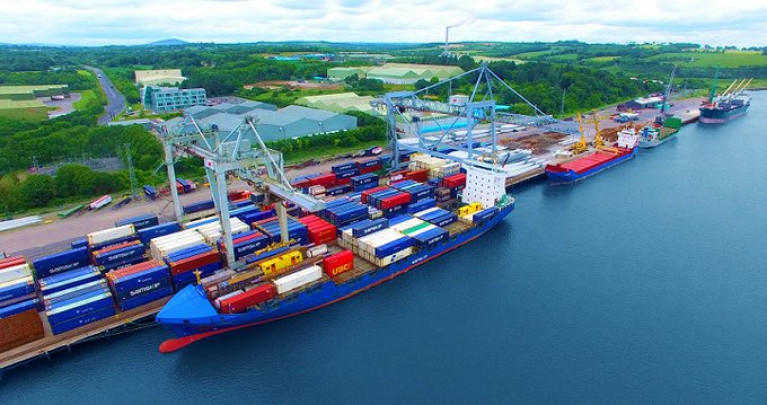Displaying items by tag: Larger Containership
Larger Samskip Ship Added Along With Waterford Call to Recently Launched Ireland-Amsterdam Link
In response to growing demand, Samskip has introduced a larger, faster containership, for its recently launched weekly container service between Dublin and Amsterdam by adding a call to the Port of Waterford.
The expansion comes less than five months after the debut of Amsterdam as a service separate from Samskip’s Rotterdam-Ireland links.
“We have experienced strong uptake for the direct route into Amsterdam’s network of rail, road and barge connections to major EU markets,” said Thijs Goumans, Head of Ireland Trade, Samskip. “As anticipated, customers linking to Ireland have been eager to avoid the post-Brexit hassles of UK distribution. Waterford can expect the same seamless connections.”
Monday night departures from TMA Terminal Amsterdam for arrival in Dublin on Wednesday complement Samskip’s existing Rotterdam-Ireland shortsea services, said Goumans. For Irish exporters, the weekend return to Amsterdam has also proved a key attraction.
“Samskip rail links between TMA and Duisburg connect Irish importers and exporters to markets farther east,” he said. “Adding Waterford brings new opportunities for Irish exports in the northern Netherlands, Germany, Poland and beyond.”
The service upgrade sees the introduction of the 750TEU capacity container ship Edith, whose faster operating speed accommodates a call in Waterford after the Dublin Port without any schedule disruption.
Samskip’s Rotterdam-Ireland services are sustained separately by a pair of 800TEU vessels.
“We are delighted by this expansion of Samskip’s Ireland service,” said Alma Prins-Droog, Head of Cargo & Offshore, Port of Amsterdam. “Since its inauguration last January, TMA Logistics and Samskip have worked tirelessly to make this service a success. This development highlights the position of the port of Amsterdam as a short sea hub, offering shippers efficient and reliable connections between Ireland and the European hinterland. We will continue to work with our partners to ensure success. The Irish container market shows strong growth, and the addition of the port of Waterford offers many new opportunities.”
Michael van Toledo, General Manager, TMA Logistics added: “Every week there has been a faster uptake of vessel slots on this route, demonstrating that the Amsterdam-Ireland link is a response to demand that was already there.
“TMA’s congestion-free road access provides a platform for growth in FMCG volumes into Ireland and for Irish pharma and dairy exports via Amsterdam, with Samskip rail services offering connections to the east and cross-docking at TMA is winning over trailer operators to and from markets further south of Amsterdam. over the past three years.''
Port of Waterford Chief Executive Frank Ronan said that the latest service development is built on a strong relationship between carrier and port, after a decade of calls by Samskip’s Ireland-Rotterdam services to Belview Container Terminal.
“The addition of a shortsea connection to Amsterdam by one of our leading service partners demonstrates the growth opportunities that exist in both directions for direct links between Ireland and other EU markets,” said Ronan.
“As the premier unitised facility in the south-east of Ireland, Waterford has capacity to handle more frequent direct lo-lo services into continental Europe, whether driven by local exports or rail freight containers moving across country,” said Ronan.





























































